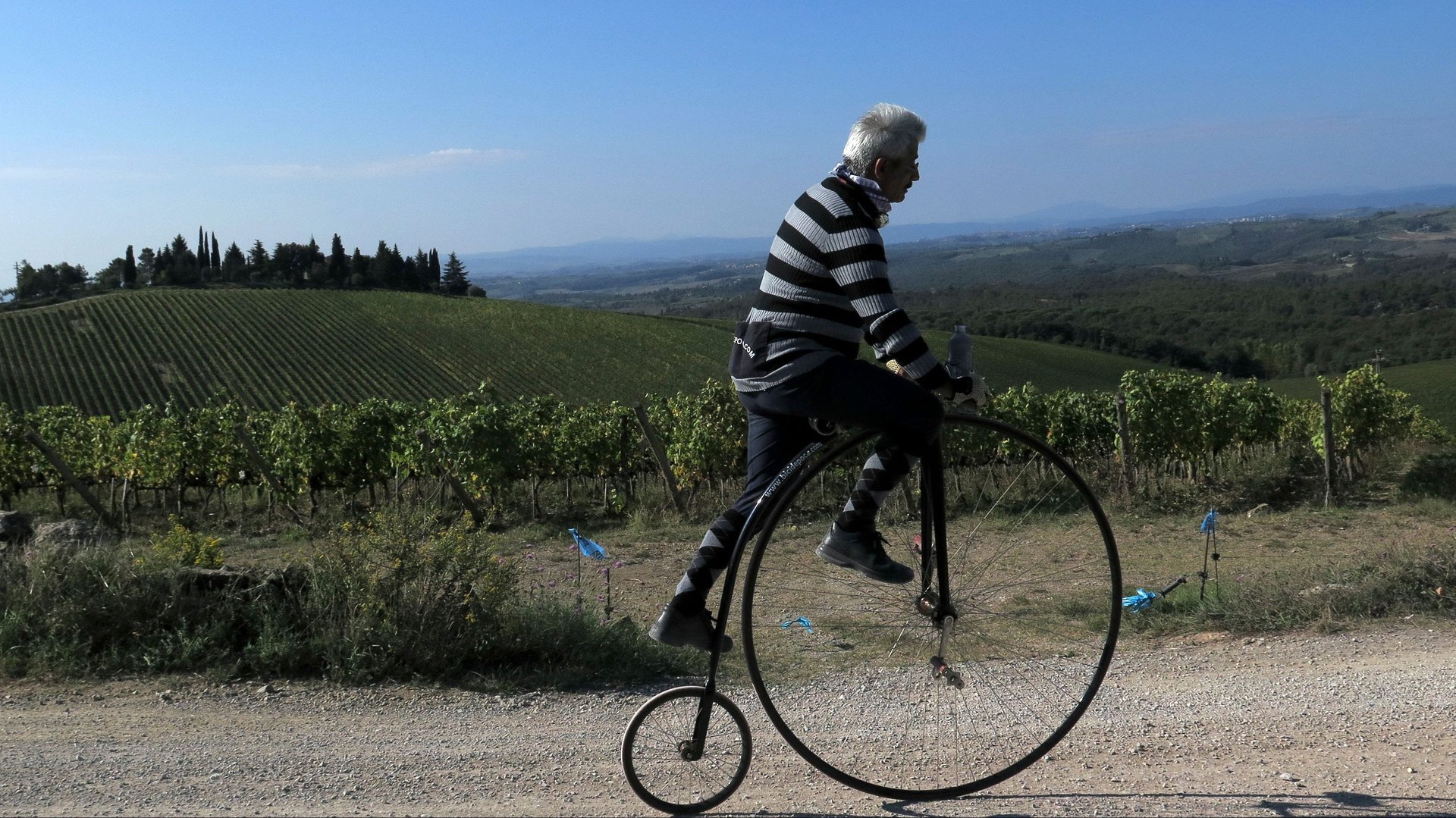Forget your gym subscription—be more like the Sardinians this year
Gym memberships spike in January. We then spend months wasting money on them and feeling guilty. Gold’s Gym, a fitness chain, even uses falling check-in data to identify the day when resolutions fail. They call it the Fitness Cliff—and it’s normally sometime in early February.


Gym memberships spike in January. We then spend months wasting money on them and feeling guilty. Gold’s Gym, a fitness chain, even uses falling check-in data to identify the day when resolutions fail. They call it the Fitness Cliff—and it’s normally sometime in early February.
The problems with joining a gym as a New Year’s resolution are manifold. Changing and forming habits is hard to maintain when the new habit is a radical departure from your old ways. Gyms, meanwhile, are linked—at least in many minds—with goals: A certain distance run at a certain intensity; a weight lifted; kilos shed. Failing to meet those goals can disrupt the entire project.
A better way to become fitter may well be to incorporate healthier habits into your life in a way that will make them stick. The good news is that’s manageable for most people.
Live like a Sardinian
Some much-cited research from 2011 noted that a particular area of the Italian island of Sardinia, the provinces of Ogliastra and Nuoro in the mountainous central east, had a much higher than average proportion of centenarians than the rest of Italy, and that the gender balance among that population was unusually equal (men tend to live less long than women in most of the world.)
The researchers speculated that there were a number of secrets to these people’s long life: There were some potential genetic reasons for longevity of the men in the region, as well as a host of other possible factors including a healthy Mediterranean diet, close-knit community structures, and a high level of physical movement associated with people’s daily lives. (Most of the men in the study were shepherds.) Even the consumption of local red wine, because it was high in antioxidants, was cited as a possible factor. The area was demarcated in blue on a map, and “Blue Zone” became a shorthand for a place with a preponderance of long-lived people.
Dan Buettner, author of a bestselling book series on areas of natural longevity, later trademarked the name Blue Zones for his wellness company, which centers on promoting health through a plant-based diet, regular natural movement, social interaction, and mindfulness.
“The world’s longest-lived people don’t pump iron, run marathons, or join gyms,” the Blue Zones website explains. “Instead, they live in environments that constantly nudge them into moving without thinking about it. They grow gardens and don’t have mechanical conveniences for house and yard work.” The Blue Zones project identifies specific communities with exceptional longevity in Japan, Greece, Costa Rica, and California, alongside Sardinia.
Most people are unlikely to decide that quitting their job to become a shepherd in Sardinia is feasible. But incorporating more natural movement into your day is. One of the best candidates for change is the commute to work. Replace public transport or driving with walking, cycling or running wherever possible, get out of the office at lunchtime for a walk outside, and incorporate regular breaks into a day of desk work where you walk, stretch, and otherwise move naturally.
Similarly, most people can make healthier choices when it comes to food, whether that means replacing butter with olive oil or making lunch at home rather than buying takeaway. This might feel harder in a cramped city or isolated suburb than in an Italian village, but it’s possible with planning, and doesn’t have to make food any less enjoyable. And hanging out across generations—a form of community attainable whether or not you live close to your family—has also been shown to have health benefits.
No-goal resolutions
The problem with a New Year’s resolution that’s goal-based is that once you begin to slip from the path of fulfilling the goal, you begin to feel like a failure. Joining a gym, since it’s a decisive act that involves the payment of money, a visit to a new place, and sometimes the acquisition of a physical gym card, can itself feel like the achievement of a goal. In fact, it’s a proxy for the fitness you hope to attain. And, if your good intentions slip, the proxy can become a focus of self-flagellation: The card unused, the direct debit slipping out of the bank account each month.
Habit forming, according to the principles of Zen Buddhism, starts with one small change. This could be adding ten minutes of walking to your schedule every week. Only once this is established, writes Leo Babauta, an author and founder of Zen Habits, should you add another new habit. What’s encouraging about this approach is that while it’s slow and incremental, after a year you could be walking miles more each week, running to work, or taking up salsa dance to expend your excess energy. A year on from joining a gym in January, you may be in exactly the same position as you are today because the habit was too different to what preceded it, and didn’t stick.
If your New Year’s resolution is “go to the gym three times a week” or “lose 20 lbs” you’ll feel like a failure every time you miss a session, or until you lose the weight. Feeling like a failure, because it’s dispiriting, will make failure more likely. Instead, think about goals that are open-ended—become a better runner, for example—or that change your relationship with decisions that make up the fabric of your day.
If faced with a choice between a walk to work and a cab ride, the question “What would a Sardinian shepherd do?” might be much more rewarding, in the long term, than membership of the swankiest gym in town.